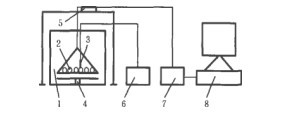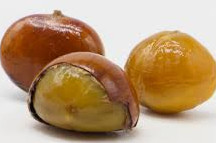Effect of different drying methods on chestnut quality
Absrtact: In order to explore the suitable drying methods for different chestnut products, five drying methods were used, including microwave drying equipment, vacuum freeze drying, hot air drying, natural ventilation drying and microwave vacuum drying. The nutritional components, flavor substances and functional characteristics of dried chestnut were evaluated.

The results showed that the quality of chestnuts treated by different drying methods was quite different. The nutrient composition and processing quality of vacuum freeze-dried chestnuts were significantly better than those of the other four drying methods. The quality of chestnuts dried by microwave vacuum drying was second only to that of freeze-dried chestnuts. The difference between natural ventilation drying and hot air drying in processing quality was small, and only natural drying chestnuts contained Vc. The quantity is higher than that of hot air drying.
The best texture parameter is hot air drying. A total of 49 flavor substances were detected, of which 28 were vacuum freeze-drying and microwave drying, 23 were hot air drying, 21 were microwave vacuum drying, and 13 were natural drying. Except for 3-ethyl-2, 5-dimethylpyrazine, the highest content was benzyl alcohol in the other four methods. The quality of microwave vacuum drying of chestnut is second only to vacuum freeze drying, and the drying speed is fast and the energy consumption is low. It is suitable for industrial production of chestnut drying and processing. The results of this study provide a theoretical basis for further processing and utilization of chestnut.
Key words: chestnut microwave drying; drying method; quality; flavor substances; processing characteristics

Chestnut, the genus Chestnut of Beech Family, is known as "woody grain, iron crop" and originated in China. It has been cultivated for more than 3000 years. Its variety resources are abundant and its distribution is vast. It has been cultivated in more than 20 provinces with an area of 111,000 hm2. China is the country with the largest yield of chestnut and has been steadily increasing, with the output of 165,980,000 tons in 2013, accounting for 78.5% of the world's total output. Castanea mollissima is prone to mildew, germination, insects and other phenomena during storage, so it is not suitable for long storage.
Therefore, it is necessary to develop the processing of chestnut series products. In the process of deep processing of chestnut, dehydration is needed. As a heat sensitive material, the quality change of chestnut is very sensitive to drying temperature. Poor control will affect the sensory quality and nutritional quality of chestnut products. Therefore, the drying of chestnut has become one of the key operations in the deep processing of chestnut. As a semi-finished product, chestnut powder can be made into chestnut beverage, chestnut health food, as well as additives for dessert and bread, which has broad market prospects.
Drying is one of the most important ways of food processing and preservation. The earliest way of drying fruits and vegetables was mainly solar energy drying, but its drying conditions were relatively simple and the products were vulnerable to pollution. The disadvantage of natural drying promotes the development of drying technology. New drying technologies such as freeze-drying, microwave drying and infrared radiation drying have emerged. Microwave vacuum drying technology is a new combined drying technology, which uses microwave energy to dry materials under vacuum conditions. It has the characteristics of high efficiency, low temperature, easy control and environmental protection. It can well retain the original color, fragrance, thermal sensitivity and biological active ingredients of materials.
At present, some related scholars have also done some research on the drying of chestnut, such as Wei Zongfeng and others on the preparation of dehydrated chestnut slices by direct drying; Li Yunyan and others on the preparation of dehydrated chestnut slices by microwave vacuum combined drying; Zhou Jie and others on the effects of microwave and hot air combined drying on the drying characteristics of chestnut. As for the aroma components of chestnut, Morini et al. used gas chromatography-mass spectrometry to detect the aroma components of roasted and boiled chestnut, and Gong Zhiqing et al. studied the effect of ultra-high pressure treatment on the flavor components of ready-to-eat chestnut kernels.
However, there is no systematic comparative study on flavor components and quality traits of chestnut under different drying methods. In this study, natural ventilation drying, freeze drying, hot air drying, microwave drying and microwave vacuum drying were used to dry chestnut, and the nutrients, flavor substances and functional characteristics of the dried chestnut were studied.